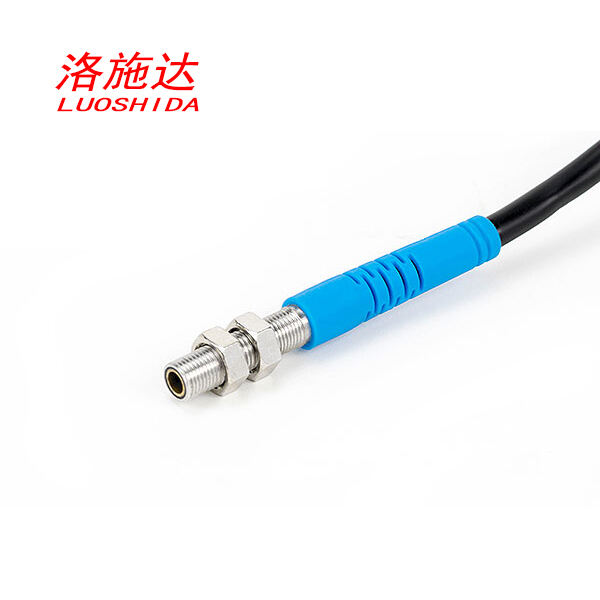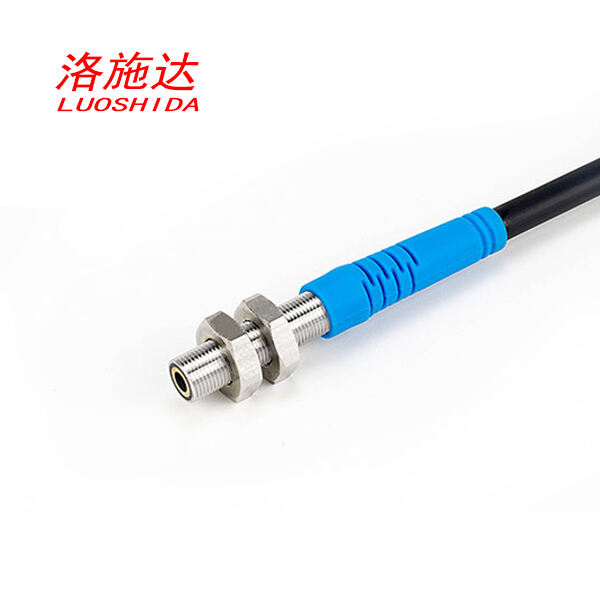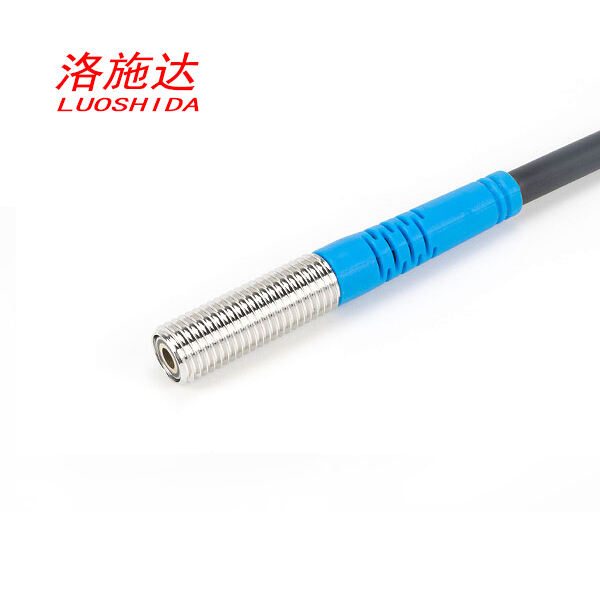Worried about inaccurate detection in complex environments? Photoelectric sensors can solve it.
How Photoelectric Sensors Enhance Detection in Complex Environments
Photoelectric sensors play a really important role in industrial automation systems where they help with accurate object detection and monitoring tasks. Market research indicates that demand for these sensors continues to rise as more industries adopt automated solutions. Basically how they work is through beams of light that can spot objects, notice differences on surfaces, and pick up other characteristics. Because of this capability, many factories rely heavily on photoelectric sensors to boost productivity across different manufacturing environments. Some companies have even reported cutting down downtime significantly after integrating these sensing technologies into their production lines.
Environments filled with dust, high humidity levels, or constantly changing lighting create real headaches for standard sensors. Photoelectric sensors were built to tackle exactly these kinds of problems though, delivering dependable results when other options fail. What sets them apart is their ability to adapt on the fly, compensating automatically for all sorts of environmental disruptions. This means accurate readings stay consistent no matter what kind of mess they're working in. That kind of toughness explains why manufacturing plants, construction sites, and agricultural operations rely so heavily on these sensors day after day despite ever-changing conditions around them.
Types of Photoelectric Sensors for Accurate Detection
Photoelectric sensors are essential for achieving precise object detection in various industrial applications. They come in several types, each tailored to meet specific operational needs, enhancing accuracy and reliability in challenging environments.
Through-Beam Sensors
Through-beam sensors consist of a separate transmitter and receiver, offering exceptional long-range detection capabilities. These sensors can detect objects up to 60 meters away, making them suitable for large-scale industrial applications. Their high accuracy and long-range detection make them indispensable in environments where precise detection from a distance is critical.
Retroreflective Sensors
Retroreflective sensors utilize a reflector to bounce emitted light back to the receiver, ensuring reliable detection in medium-range applications. These sensors are particularly favored in industries like packaging and material handling, where they provide effective detection solutions without requiring a separate receiver setup, thus simplifying installation and maintenance processes.
Diffuse Mode Sensors
Diffuse mode sensors work by picking up reflected light from whatever they're pointing at, which makes these sensors great for things that need to be detected close up. Because they take up so little room and still manage pretty good accuracy even when space is tight, manufacturers love putting them on robots and throughout factory assembly lines. These environments often have strict space constraints while needing pinpoint accuracy, so having sensors that fit without compromising performance is a real advantage.
Background Suppression Sensors
Background suppression sensors are engineered to ignore reflections from distant objects, ensuring precise detection of nearby objects. This feature makes them particularly useful in high-precision applications like the automotive industry, where detecting objects amidst complex backgrounds and various reflections can be challenging.
In conclusion, understanding the different types of photoelectric sensors helps in selecting the right sensor for specific industrial needs, thereby enhancing detection accuracy and operational efficiency.
Advantages of Photoelectric Sensors in Complex Scenarios
High Precision and Reliability
Photoelectric sensors stand out for their precision and dependability, which makes them essential tools in complicated situations across manufacturing. Research shows these devices hit around 99% accuracy rate when put to work on factory floors, something plant managers really appreciate. What sets them apart is how they handle tough environments while still picking up on tiny changes in light intensity and positioning. This capability means factories don't miss those critical details during production runs. For companies running assembly lines day after day, having sensors that consistently deliver good data translates directly into better product quality and fewer defects slipping through the cracks.
Adaptability to Harsh Conditions
Photoelectric sensors are built tough enough to handle rough environments, which is why they work so well across different types of factories and plants. A lot come with an IP67 rating that lets them keep functioning properly whether it's freezing cold or sweltering hot, covered in dust, or exposed to lots of moisture. The fact that these sensors can take such punishment means they last longer before needing replacement. Their reliable operation under tough conditions helps protect production lines from unexpected shutdowns caused by environmental factors that would stop lesser equipment dead in its tracks.
Ease of Installation and Maintenance
Photoelectric sensors are pretty straightforward to install and don't require much maintenance, which cuts down on downtime and saves money in the long run. The plug and play nature makes them really simple to set up, something that factory managers appreciate since it can cut installation time by around 30%. What's more, these sensors hardly ever need servicing, so companies save on those regular maintenance checks and parts replacement costs. This reliability means production lines keep running without unexpected stoppages, which matters a lot in manufacturing settings where every minute counts toward meeting production targets.
Applications of Photoelectric Sensors in Various Industries
Manufacturing and Assembly Lines
Photoelectric sensors play a key role across manufacturing floors and assembly lines where they handle essential tasks like spotting objects, checking positions, and controlling quality. When these sensors get built into automated production setups, factories typically see efficiency gains somewhere around 40%. On moving conveyor belts, the sensors spot products and components with remarkable accuracy, keeping operations running smoothly without hiccups. What really matters though is how they catch flaws or alignment issues during production runs. Finding these problems early saves companies from costly recalls later on. That's why most smart manufacturers consider photoelectric sensors a must-have component in today's factory environments.
Food and Beverage Industry
Photoelectric sensors have become pretty much essential in the food and beverage sector when it comes to keeping things clean and accurate during those packaging and bottling operations. Most of these sensors meet FDA requirements so they're actually safe to work with in food processing areas. The real benefit though? They keep fill levels spot on consistent across batches, something that matters a lot for product quality checks and passing all those inspections from regulators. And let's not forget about what happens when there's foreign stuff floating around in products nobody wants to eat. These sensors catch those pesky contaminants before they make it into finished goods, helping protect consumers' health while avoiding costly recalls down the line.
Automotive and Logistics
Photoelectric sensors play a big role in both automotive manufacturing and logistics operations when it comes to spotting parts, keeping tabs on conveyor belts, and making sure everything runs smoothly. Around 7 out of 10 automotive assembly plants worldwide actually use these sensors, which shows just how important they've become. During car assembly, these devices help make sure components end up exactly where they need to be, cutting down mistakes and speeding things up considerably. For logistics companies, tracking packages moving along conveyor belts means faster processing times and quicker shipments. This makes them invaluable throughout the entire supply chain from factory floor to delivery truck.
Exploring Top Photoelectric Sensor Products
M5mini Photoelectric Sensor
The M5mini photoelectric sensor stands out because of how small it is while still delivering good performance even when installed in cramped areas. Robotics enthusiasts and people working on mini automation setups find this sensor really useful since they often deal with limited space but need accurate readings. Despite being tiny, the sensor doesn't lose any of its core functions, which makes it work well across different manufacturing environments where bigger sensors just won't fit.

M6mini Photoelectric Sensor
The M6mini photoelectric sensor stands out because of how well it detects objects within medium ranges, which makes it great for things like sorting packages on conveyor belts. Packaging companies love this little device since it just keeps working without fail day after day, giving them that consistency they need when dealing with fast moving products. What really sets the M6mini apart from other sensors is this sweet spot between what it can do and how flexible it actually is. Many manufacturers find themselves relying on it whenever they need something reliable but not super expensive for their mid range detection requirements.

M8mini Photoelectric Sensor
The M8mini photoelectric sensor is tailored for long-range detection, suiting large-scale industrial settings. Its robust design and superior accuracy make it indispensable in logistics and warehousing, where durability and precision are highly valued. The M8mini's resilience supports extensive industrial requirements, enhancing operational efficiency and reliability.


 EN
EN
 AR
AR
 FR
FR
 DE
DE
 IT
IT
 JA
JA
 KO
KO
 PT
PT
 RU
RU
 ES
ES
